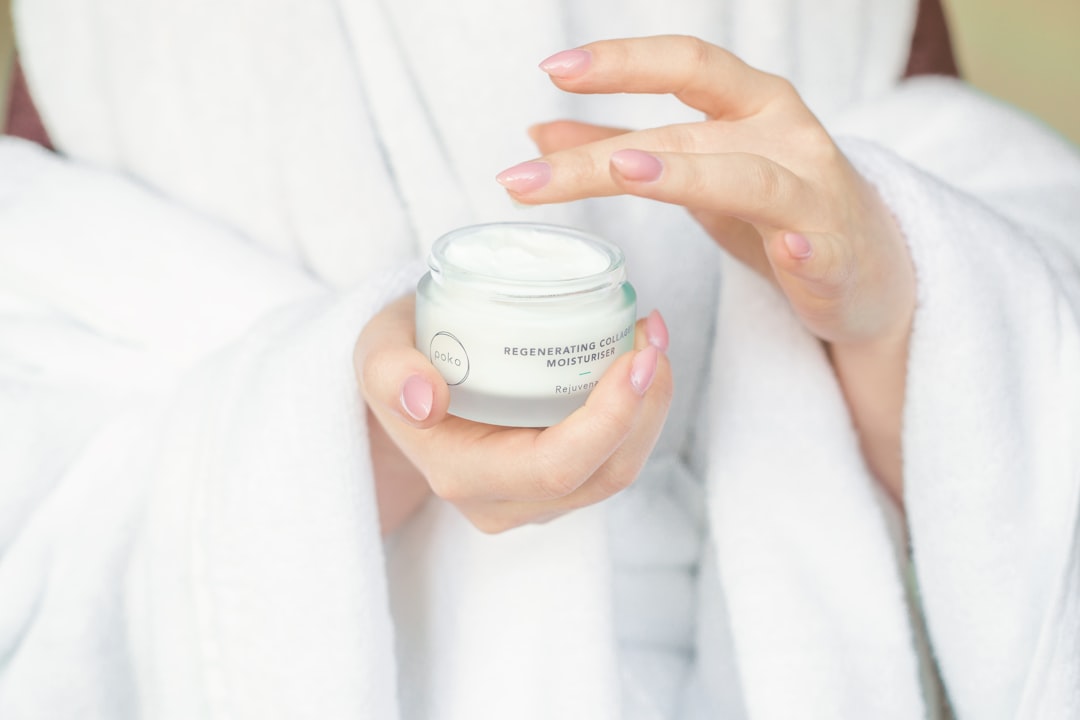Combination skin is a skin type that is characterized by having both oily and dry areas on the face. Typically, the T-zone (forehead, nose, and chin) tends to be oily, while the cheeks are dry. This can make finding the right skincare routine a bit challenging, as products that work for oily skin may exacerbate dryness, and vice versa. Identifying combination skin can be done by observing the different areas of your face and noting the varying levels of oiliness and dryness. If you notice that your T-zone is shiny and prone to breakouts, while your cheeks feel tight and flaky, you likely have combination skin.
It’s important to understand that combination skin can change over time due to factors such as weather, hormones, and age. For example, during the summer months, the oily areas of your face may become even oilier, while the dry areas may become more parched in the winter. Being aware of these changes can help you adjust your skincare routine accordingly. Additionally, it’s essential to use products that are specifically formulated for combination skin to effectively address both oily and dry areas without causing further imbalance.
Summary
- Combination skin is characterized by having both oily and dry areas on the face, making it important to tailor your skincare routine accordingly.
- When it comes to skincare for combination skin, it’s essential to use a gentle cleanser, exfoliate regularly, and moisturise with a lightweight, non-greasy formula.
- For makeup, opt for oil-free and non-comedogenic products to achieve a flawless finish on combination skin, and use a primer to help control oiliness and keep makeup in place.
- Look for skincare products specifically designed for combination skin, such as gel-based cleansers, oil-free moisturisers, and hydrating serums to address both oily and dry areas.
- Dealing with oiliness and dryness simultaneously can be challenging, but using targeted treatments, adjusting your skincare routine seasonally, and staying hydrated can help balance your skin.
Tailoring Your Skincare Routine to Suit Combination Skin
When it comes to caring for combination skin, it’s crucial to tailor your skincare routine to address both the oily and dry areas of your face. One approach is to use different products for different areas of your face. For example, you can use a gentle foaming cleanser on the oily T-zone to control excess oil and a hydrating cream cleanser on the dry cheeks to nourish and moisturize. This targeted approach allows you to address the specific needs of each area without over-drying or over-moisturizing.
Another important aspect of a skincare routine for combination skin is exfoliation. Exfoliating regularly helps to remove dead skin cells and unclog pores in the oily areas, while also promoting cell turnover and preventing flakiness in the dry areas. Look for a gentle exfoliant that contains alpha hydroxy acids (AHAs) or beta hydroxy acids (BHAs) to effectively exfoliate without causing irritation. Additionally, incorporating a lightweight, oil-free moisturizer for the T-zone and a richer, hydrating moisturizer for the cheeks can help balance the skin’s moisture levels without exacerbating oiliness or dryness.
Makeup Tips for Combination Skin: How to Achieve a Flawless Finish
When it comes to makeup application for combination skin, achieving a flawless finish requires a strategic approach. Start by prepping the skin with a mattifying primer in the T-zone to control excess oil and minimize the appearance of pores. For the dry areas, use a hydrating primer to create a smooth canvas and prevent makeup from clinging to dry patches. Using different primers for different areas of the face helps create a balanced base for makeup application.
When selecting foundation for combination skin, opt for a formula that offers buildable coverage and a natural finish. A lightweight, oil-free foundation works well for the T-zone, while a hydrating foundation with a dewy finish is ideal for the cheeks. Blend the two foundations seamlessly at the center of the face to create a seamless transition between the oily and dry areas. Additionally, using a setting powder only on the T-zone can help control shine without drying out the rest of the face.
For blush and bronzer application, choose cream or liquid formulas that can be easily blended on both oily and dry areas. These formulas provide a natural, seamless look without emphasizing any uneven texture or dry patches. Finally, finish off your makeup look with a setting spray to lock everything in place while maintaining a balanced, natural-looking finish.
The Best Products for Combination Skin: From Cleansers to Moisturisers
When it comes to selecting products for combination skin, it’s essential to choose formulas that cater to both oily and dry areas without causing further imbalance. For cleansers, opt for a gentle foaming cleanser with salicylic acid or glycolic acid to effectively cleanse and exfoliate the T-zone without stripping the skin. For the dry areas, choose a cream cleanser with hydrating ingredients such as hyaluronic acid or ceramides to nourish and moisturize.
In terms of moisturisers, look for lightweight, oil-free formulas that provide hydration without adding excess shine to the T-zone. Ingredients such as niacinamide and hyaluronic acid are beneficial for balancing moisture levels in oily areas without clogging pores. For the dry areas, opt for a richer moisturiser with emollient ingredients like shea butter or squalane to deeply nourish and soothe dry, flaky skin.
When it comes to exfoliation, consider using a gentle chemical exfoliant with AHAs or BHAs to effectively remove dead skin cells and unclog pores in the oily areas without causing irritation or over-drying the skin. Additionally, incorporating a weekly hydrating mask with ingredients like honey or aloe vera can help replenish moisture in the dry areas while providing soothing benefits.
Tackling Common Issues: Dealing with Oiliness and Dryness Simultaneously
One of the most common issues faced by those with combination skin is dealing with oiliness and dryness simultaneously. To address this issue, it’s important to use targeted products that cater to each specific concern without exacerbating the other. For example, using a mattifying toner with witch hazel or salicylic acid on the T-zone can help control excess oil and minimize breakouts without drying out the rest of the face.
In addition to targeted skincare products, incorporating a weekly balancing mask can help address both oily and dry areas at once. Look for a mask that contains ingredients like kaolin clay to absorb excess oil in the T-zone while also providing hydration and nourishment to the cheeks. This dual-action approach helps maintain balance in combination skin without over-treating one area at the expense of the other.
Another effective way to tackle oiliness and dryness simultaneously is by adjusting your skincare routine seasonally. For example, during the summer months when oiliness tends to be more pronounced, you can switch to lighter, oil-free moisturisers for the T-zone while using richer, hydrating moisturisers for the cheeks. In contrast, during the winter when dryness is more prevalent, you can opt for heavier moisturisers for both areas while incorporating hydrating serums and oils to provide an extra layer of nourishment.
Embracing Your Unique Skin Type: Confidence-Boosting Tips
Embracing combination skin as your unique skin type is essential for building confidence and feeling comfortable in your own skin. Instead of viewing combination skin as a challenge, see it as an opportunity to learn more about your skin’s specific needs and how to effectively care for it. Understanding that combination skin requires a tailored approach can empower you to make informed decisions when selecting skincare products and creating a routine that works best for you.
It’s also important to remember that everyone’s skin is unique, and what works for one person may not necessarily work for another. Embracing your combination skin type means embracing your individuality and finding beauty in your skin’s diversity. Celebrate your skin’s ability to adapt and change with different seasons and environments, and take pride in caring for it in a way that promotes balance and harmony.
Additionally, seeking out support from others who have combination skin can be incredibly empowering. Joining online communities or forums where individuals share their experiences and tips for managing combination skin can provide valuable insights and a sense of camaraderie. Remember that you are not alone in your skincare journey, and there are many others who are navigating similar challenges and triumphs with their combination skin.
Expert Advice: Professional Tips and Tricks for Managing Combination Skin
Seeking expert advice from skincare professionals can provide valuable insights into managing combination skin effectively. Dermatologists or skincare specialists can offer personalized recommendations based on your specific concerns and goals for your skin. They can assess your skin type, identify any underlying issues, and provide tailored advice on selecting the right products and creating a skincare routine that addresses both oily and dry areas.
In addition to professional advice, consider booking regular facials with an experienced esthetician who specializes in treating combination skin. Professional facials can help address specific concerns such as congestion in the T-zone or dehydration in the cheeks while providing targeted treatments that promote balance and overall skin health.
Furthermore, staying informed about new skincare ingredients and technologies can help you make informed decisions when selecting products for combination skin. Keep an eye out for ingredients like niacinamide, hyaluronic acid, and squalane, which are beneficial for balancing moisture levels in both oily and dry areas without causing further imbalance.
In conclusion, understanding combination skin is essential for creating an effective skincare routine that addresses both oily and dry areas without causing further imbalance. Tailoring your skincare routine with targeted products, adjusting makeup application techniques, selecting suitable products, tackling common issues effectively, embracing your unique skin type confidently, and seeking expert advice are all key components of managing combination skin successfully. By taking a proactive approach and embracing your individuality, you can navigate the challenges of combination skin with confidence and achieve healthy, balanced skin.
Certainly! Here’s the paragraph with the related article included as an tag:
Discover the secrets to achieving a flawless complexion with our article on The Magic of Combination Skin: How to Transform Your Look. Learn how to balance your skin’s pH levels and maintain a healthy glow by exploring the importance of pH balance in skincare in our article The Importance of pH Balance in Skincare. Additionally, uncover the essential role of hyaluronic acid in achieving radiant skin by delving into our article Unlocking Radiant Skin: The Essential Role of Hyaluronic Acid in Your Skincare Routine. For those with sensitive skin, we also offer gentle routines and product recommendations in our article Sensitive Skin Care: Gentle Routines and Products. Elevate your skincare routine and embrace a luminous, healthy complexion today!
FAQs
What is combination skin?
Combination skin is a skin type that is characterized by having both oily and dry areas on the face. Typically, the T-zone (forehead, nose, and chin) is oily, while the cheeks are dry.
How can I identify if I have combination skin?
You can identify if you have combination skin by observing the different areas of your face. If you notice that your T-zone is oily and prone to breakouts, while your cheeks are dry and possibly flaky, you likely have combination skin.
What are the best skincare products for combination skin?
The best skincare products for combination skin are those that cater to both oily and dry areas. Look for gentle cleansers, oil-free moisturizers for the T-zone, and hydrating moisturizers for the cheeks. Additionally, using a targeted treatment for each area can help balance the skin.
How can I transform my look with combination skin?
To transform your look with combination skin, focus on creating a balanced skincare routine that addresses the specific needs of each area of your face. This may involve using different products for the T-zone and cheeks, as well as incorporating targeted treatments for any skin concerns.
What makeup techniques work best for combination skin?
When applying makeup to combination skin, it’s important to use products that cater to both oily and dry areas. This may involve using a mattifying primer in the T-zone and a hydrating primer on the cheeks, as well as choosing foundation and powder formulas that are suitable for combination skin.




